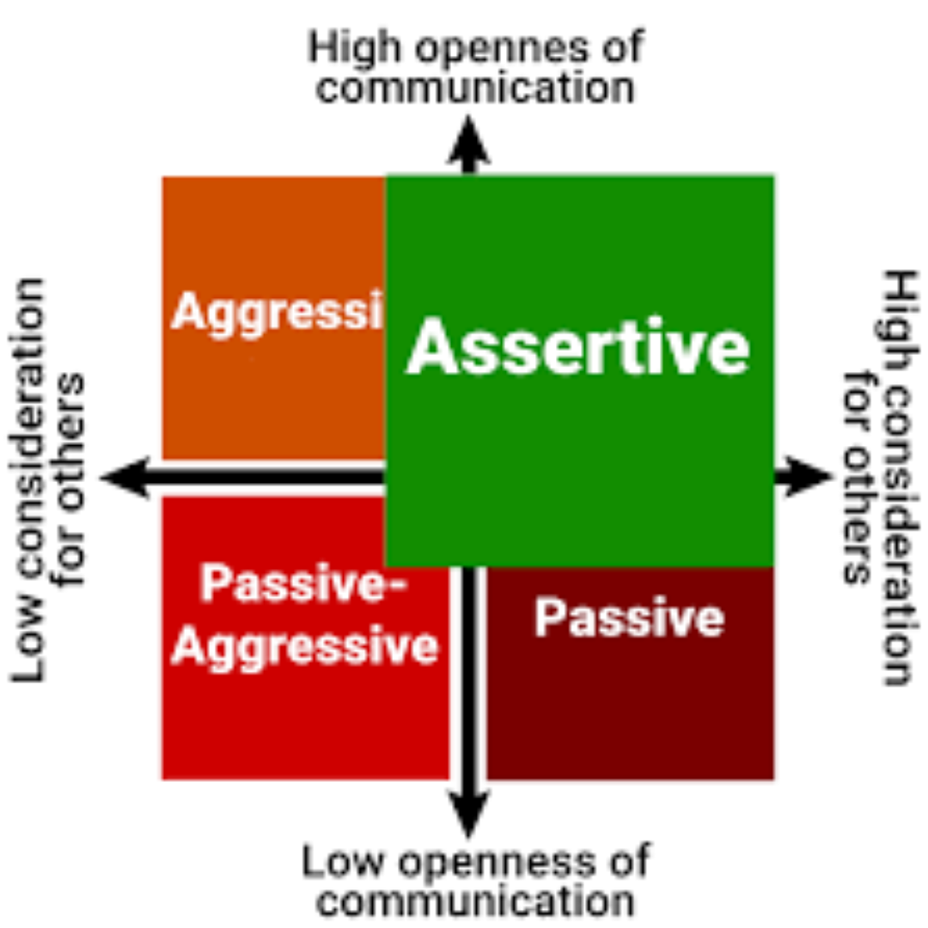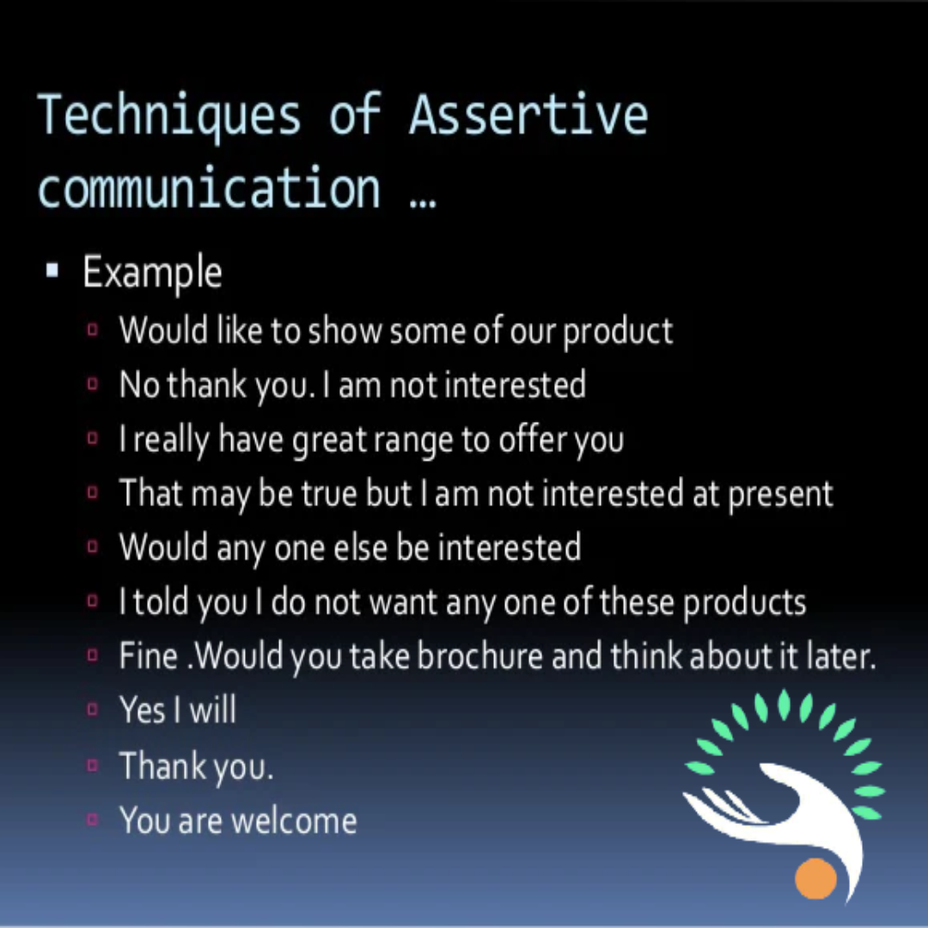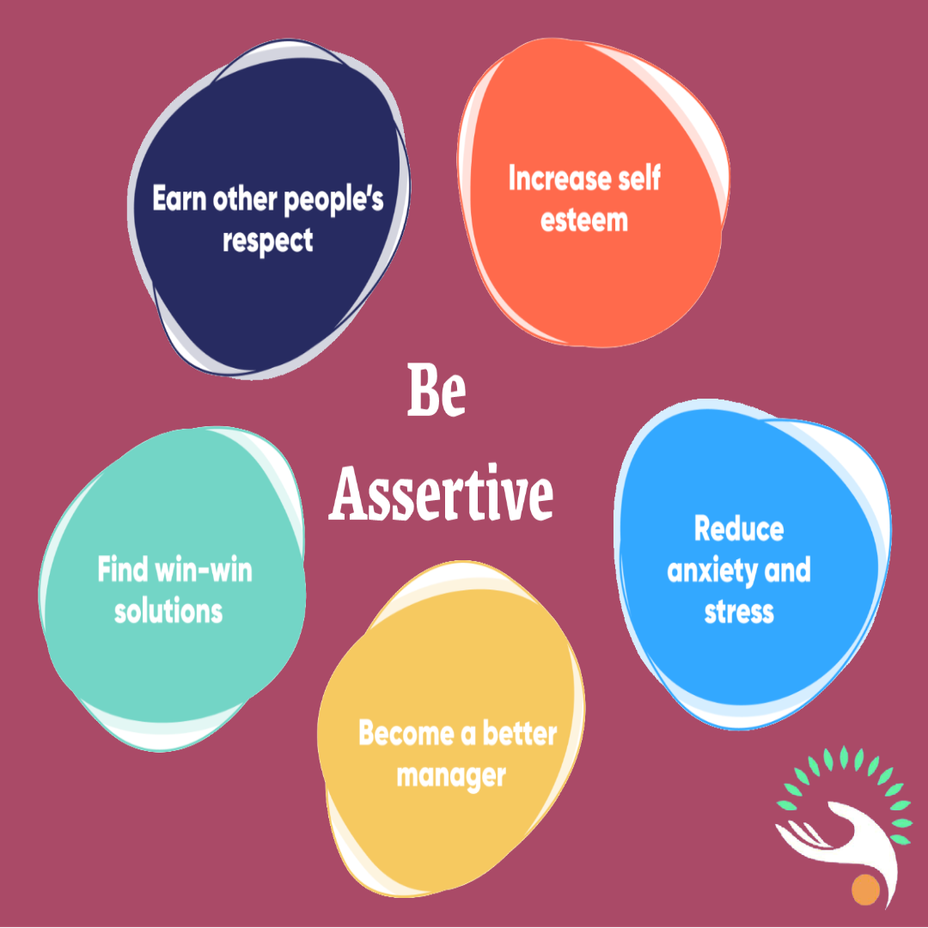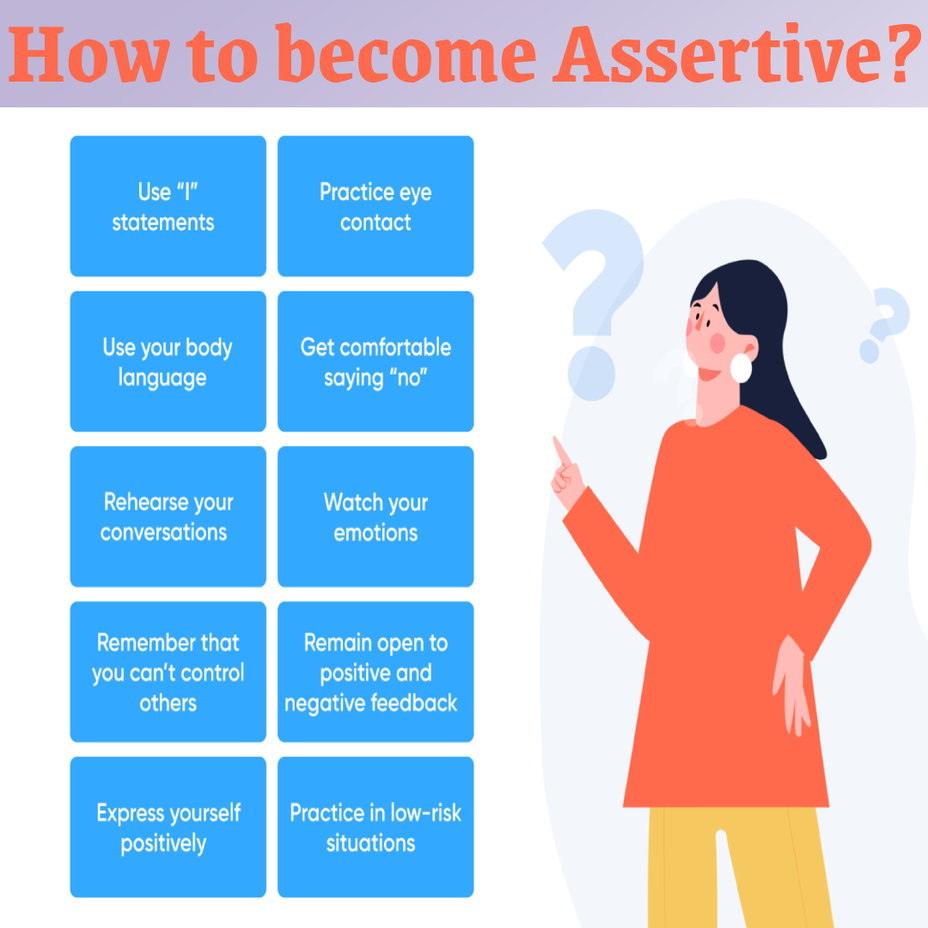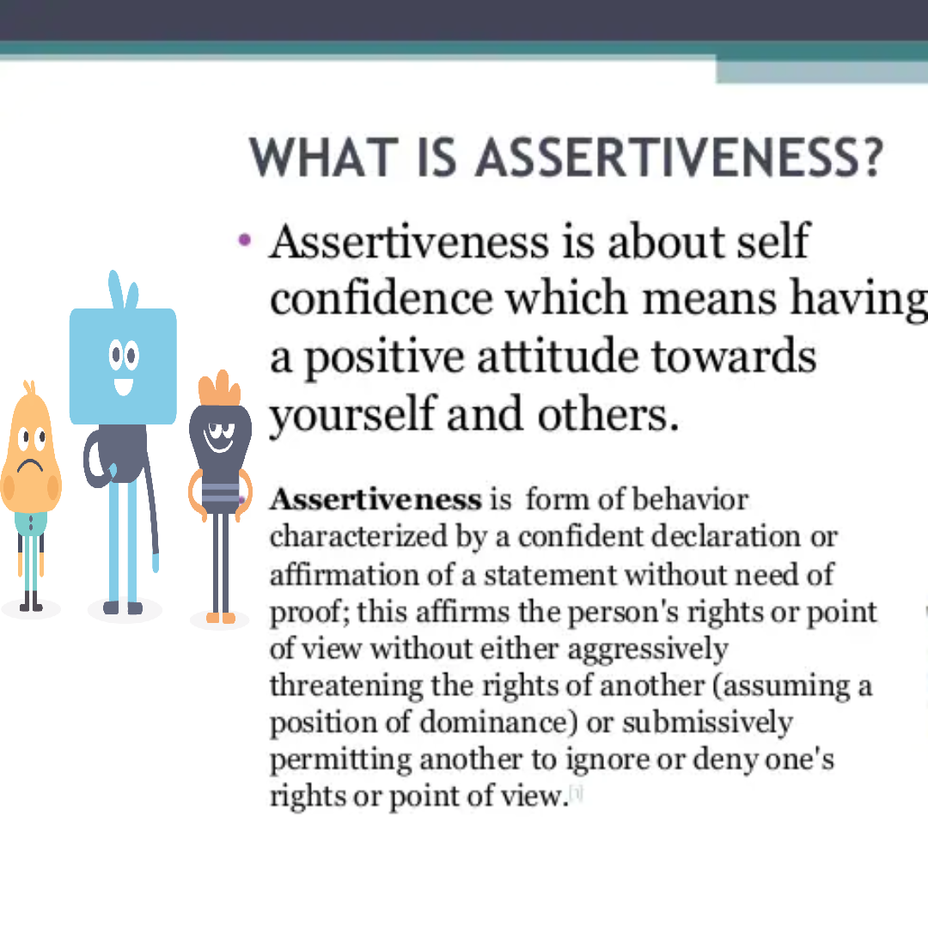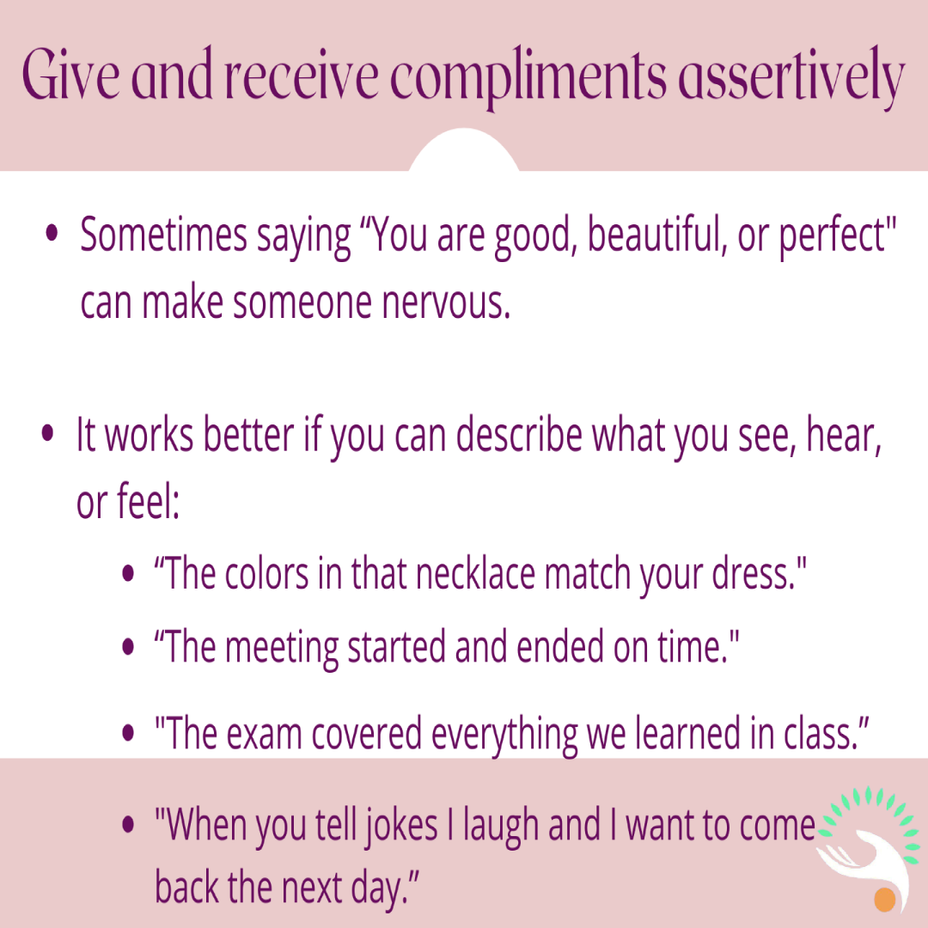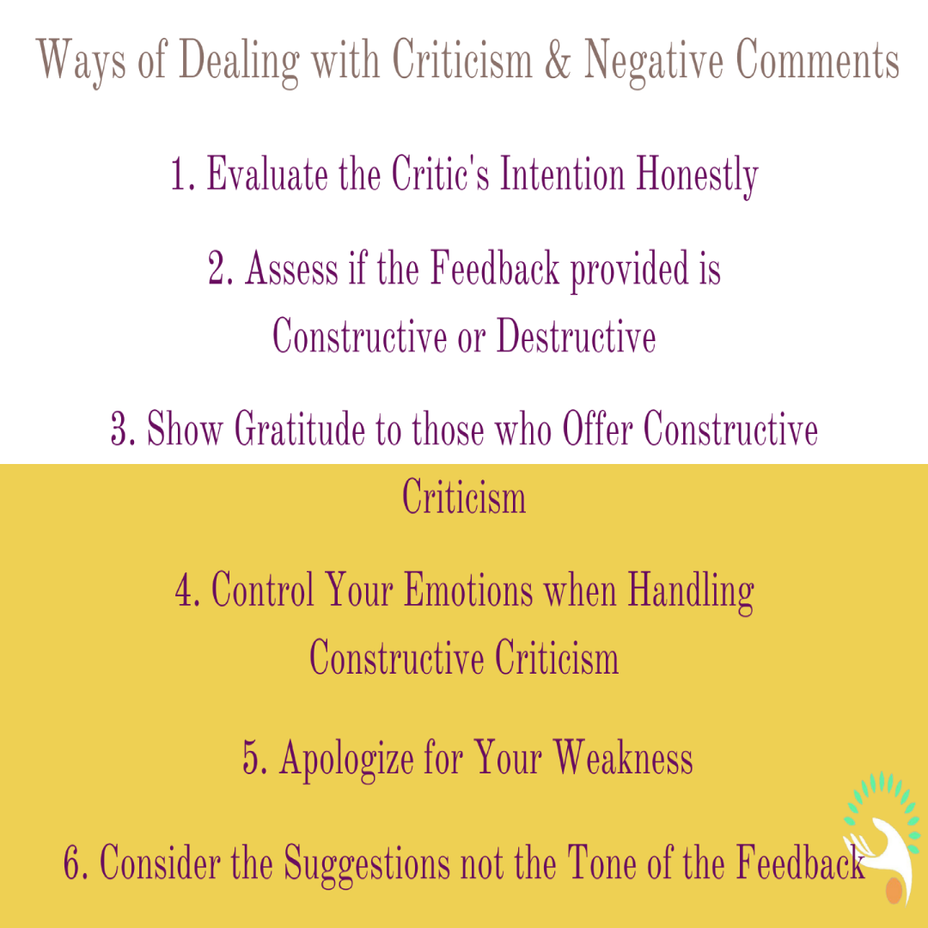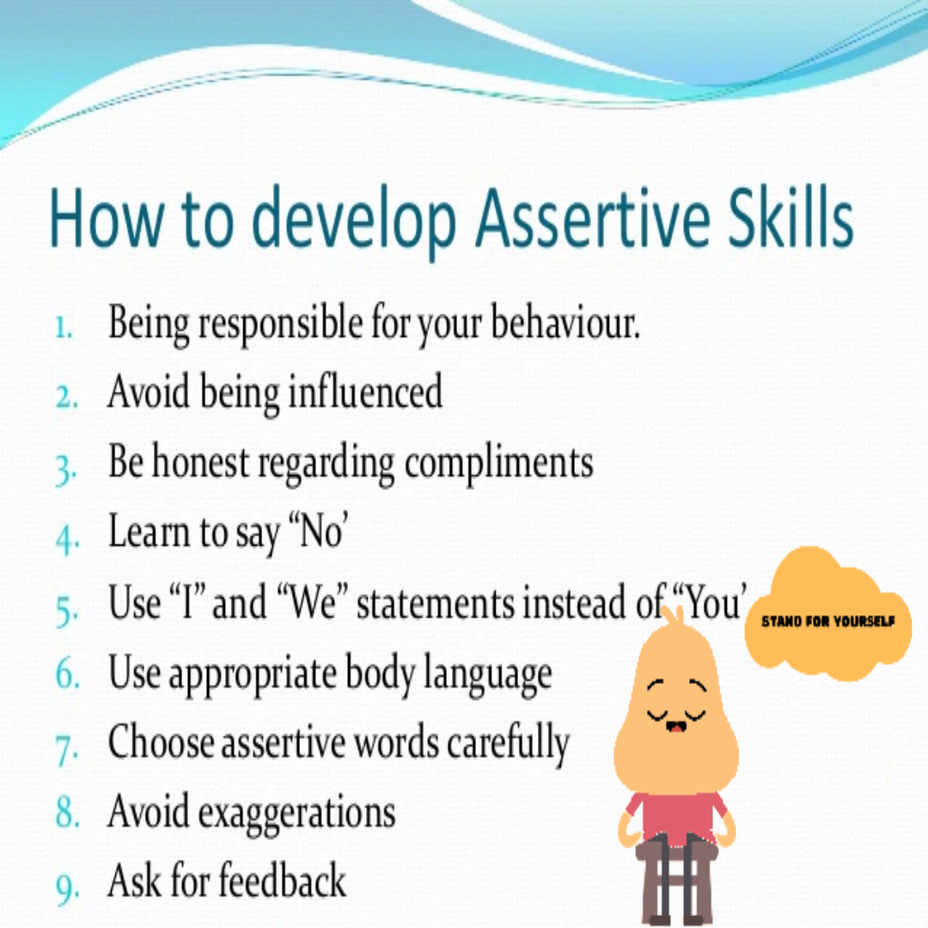Assertive Communication
PASSIVE COMMUNICATION is a style in which individuals have developed a pattern of avoiding expressing their opinions or feelings, protecting their rights, and identifying and meeting their needs. As a result, passive individuals do not respond overtly to hurtful or anger-inducing situations. Instead, they allow grievances and annoyances to mount, usually unaware of the buildup. But once they have reached their high tolerance threshold for unacceptable behavior, they are prone to explosive outbursts, which are usually out of proportion to the triggering incident. After the outburst, however, they may feel shame, guilt, and confusion, so they return to being passive.
Passive communicators will often:
-fail to assert for themselves
-allow others to deliberately or inadvertently infringe on their rights
-fail to express their feelings, needs, or opinions
-tend to speak softly or apologetically
-exhibit poor eye contact and slumped body posture
AGGRESSIVE COMMUNICATION is a style in which individuals express their feelings and opinions and advocate for their needs in a way that violates the rights of others. Thus, aggressive communicators are verbally and/or physically abusive.
Aggressive communicators will often:
-try to dominate others
-use humiliation to control others
-criticize, blame, or attack others
-be very impulsive
-have low frustration tolerance
-speak in a loud, demanding, and overbearing voice
-act threateningly and rudely
-not listen well
-interrupt frequently
-use “you” statements
-have an overbearing or intimidating posture
PASSIVE-AGGRESSIVE COMMUNICATION is a style in which individuals appear passive on the surface but are really acting out anger in a subtle, indirect, or behind-the-scenes way. People who develop a pattern of passive-aggressive communication usually feel powerless, stuck, and resentful – in other words, they feel incapable of dealing directly with the object of their resentments. Instead, they express their anger by subtly undermining the object (real or imagined) of their resentments.
Passive-Aggressive communicators will often:
-mutter to themselves rather than confront the person or issue
-have difficulty acknowledging their anger
-use facial expressions that don't match how they feel - i.e., smiling when angry
-use sarcasm
-deny there is a problem
-appear cooperative while purposely doing things to annoy and disrupt
-use subtle sabotage to get even
ASSERTIVE COMMUNICATION is a style in which individuals clearly state their opinions and feelings, and firmly advocate for their rights and needs without violating the rights of others. These individuals value themselves, their time, and their emotional, spiritual, and physical needs and are strong advocates for themselves while being very respectful of the rights of others.
Assertive communicators will:
-state needs and wants clearly, appropriately, and respectfully
-express feelings clearly, appropriately, and respectfully
-use “I” statements
-communicate respect for others
-listen well without interrupting
-feel in control of self
-have good eye contact
-speak in a calm and clear tone of voice
You can refer to this:
